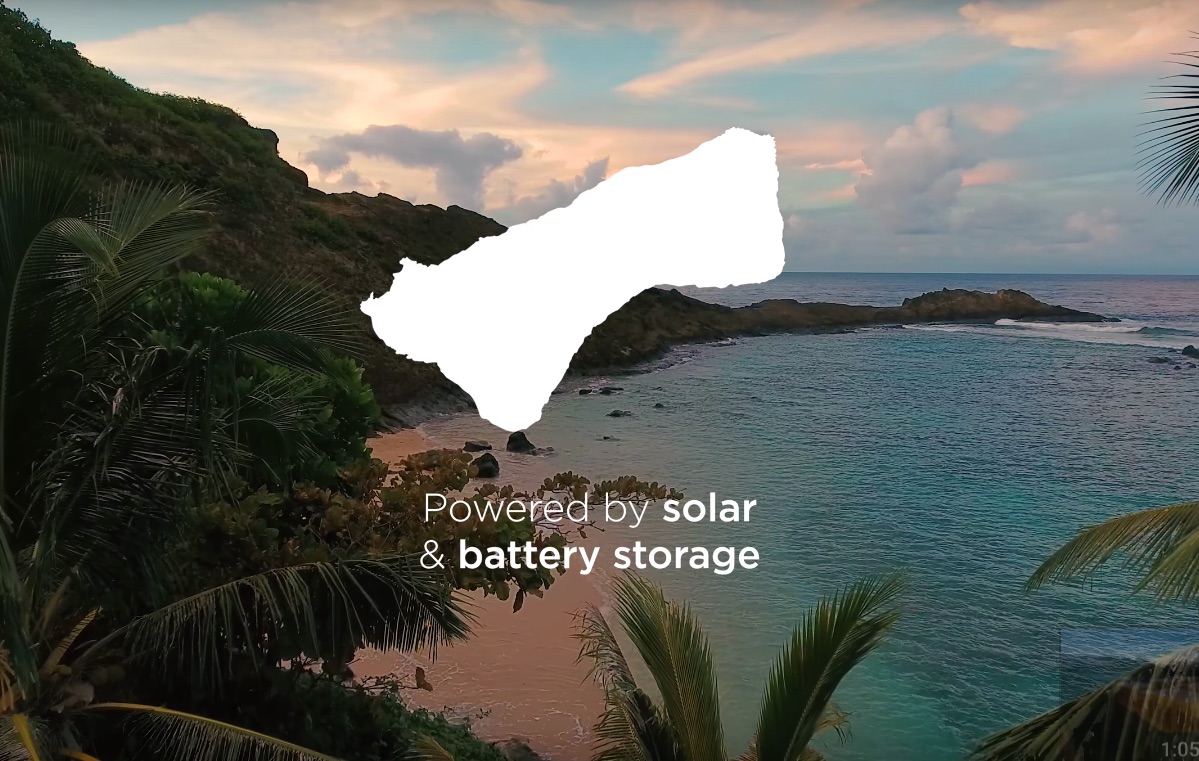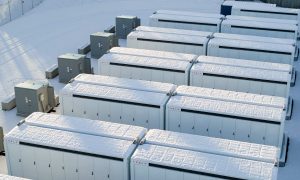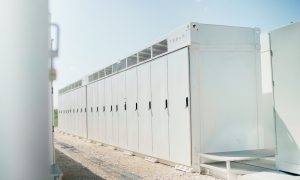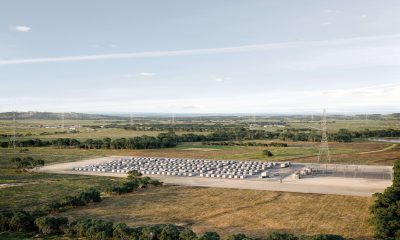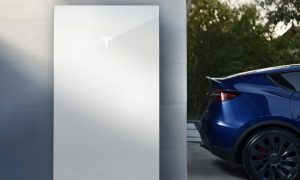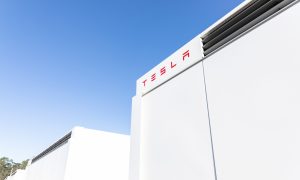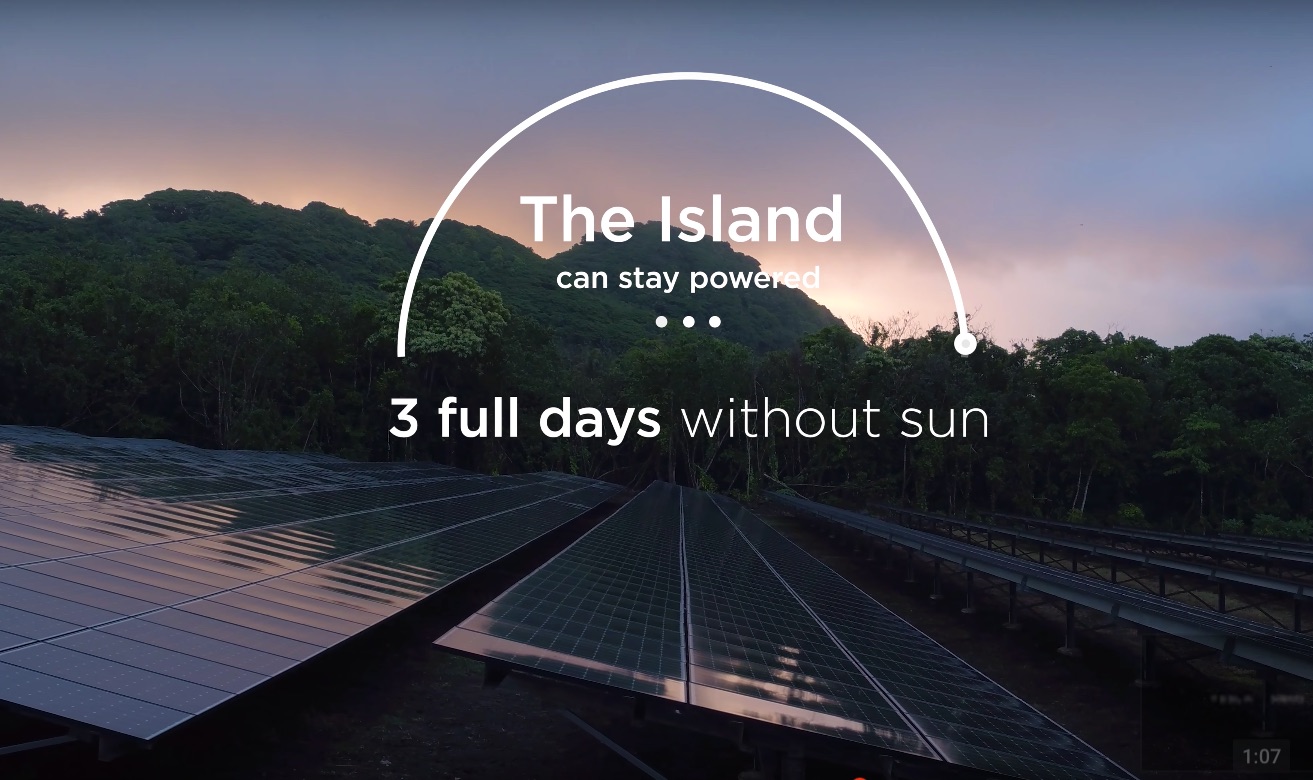

Energy
Why Tesla’s microgrid project is life changing for Ta’u’s island community
Tesla’s subsidiary, SolarCity, is at the end of a one-year solar energy microgrid project on the American Samoa island of Ta’u that, at 1.4 megawatts, can cover “nearly 100%” of its 600 residents’ electrical needs. Its benefits may be life changing for residents of Ta’u.
Ta’u is a rectangular island 10 km. long and 5 km. wide. In the distant geologic past, the south side of Ta’u collapsed, leaving dramatic 500 km. high cliffs that rise directly from the southern sea. Craters punctuate the island’s wild, thickly forested interior, known for its steep slopes and gullies. Terrain and bush can change quickly, and most of the upland area is inaccessible. American Samoa was first visited by European explorers in the 18th century, but its islands have been inhabited for over 3000 years. Today, at about 340 persons per square km., American Samoa is the second most densely populated South Pacific entity, after Tuvalu.
The island’s residents have acquired power to date largely through generators fueled by diesel. Diesel in itself is made from chemicals including sulfates, ammonium, nitrates, elemental carbon, condensed organic compounds, and even carcinogenic compounds rich in heavy metals such as arsenic, selenium, cadmium and zinc. Diesel exhaust poses major health hazards, contributes to climate change, is costly to ship, and can lead to frequent temporary blackouts. With a dramatic decrease on diesel reliance, Ta’u, through the SolarCity renewable microgrid, will experience valuable community life enhancements that can increase local control and community independence.
Grid stability in a remote location
Energy efficiency is an important component of a renewable microgrid transition. Energy storage is key to renewable island and remote community microgrids. The Ta’u integrated microgrid –- 1.4 megawatts of solar power and 6 megawatt hours of battery storage from 60 Tesla Powerpack, alongside smart controls to enable load shifting— will become an important component of the Ta’u community’s transition to energy independence.
Maintaining grid stability with renewable integration has proved challenging in many other remote island cases in which energy reliance has shifted to a microgrid. SolarCity will likely use a phased integration approach that will initially bring a small amount of renewable technologies online, as it works to balance the system, and then continue to step up their renewable penetration by integrating more solar resources alongside energy storage and advanced controls. For example, on King Island, Australia, Hydro Tasmania has overcome many renewable integration challenges to incorporate more renewable resources into the system. Simon Gamble recalls, “We started adding renewables 18 or 19 years ago, and the challenges have been technical. We had to solve the problems we uncovered as we went.”
Tesla’s Powerpack system will allow the island to use stored solar energy at night, meaning renewable energy is available for use around the clock. Procuring and transporting new technologies and equipment, which has been an issue with other remote island locations that have integrated a renewable energy microgrid, may not present as many challenges for Ta’u, due to the SolarCity involvement. Often, only one or two operators live nearby, so if major technical issues arise, teams must fly in to address the problems. Having SolarCity as a partner can diminish such technical issues on Ta’u.
How a SolarCity microgrid can alter traditional microgrid instability
Although some renewable systems have found success, other communities face challenges transitioning from a fossil fuel reliance to a microgrid. A SolarCity microgrid has the capacity to overcome these challenges due to the influence and reliability of Tesla Energy. Microgrid systems foster community resiliency and stability. Power electronics and control systems enable a more stable grid through better controls. At the same time, relying more on local resources and less on imported diesel increases overall resiliency for the Ta’u community.
Transitioning to renewable microgrids can reduce costs. Research indicates that relying on more diversely and renewably powered microgrids has led to reduced diesel usage, electricity prices, and operating costs. Creating a project like the SolarCity microgrid on Ta’u, with the requisite business plan to lower overall costs and attract investment, is a difficult and lengthy task. However, it has clearly been made easier with SolarCity’s deep understanding of inherent necessary technologies, processes, and pitfalls.
Protecting the Ta’u culture through energy independence
Fa’a Samoa or the Samoan Way is the foundation of Samoan society, culture, and heritage. Fa’a Samoa customs and culture are over 3000 years old and have changed very little over this period. The Fa’a is tenaciously defended by those who have chosen to remain in their home villages rather than to emigrate to the U.S. Fa’a culture and customs are based around the mutual respect given to elders, the church, visitors, and the extended family. The SolarCity grid will enhance the Fa’s or Samoan Way and reinforce the foundation of Samoan society, culture, and heritage.
SolarCity, alongside American Samoan and U.S. authorities, including the Department of Interior, has provided the upfront costs of designing, delivering, installing, and maintaining the solar microgrid. Their customers on Ta’u will pay a fixed monthly fee for clean solar power and start realizing cost savings from day one without the hassle of owning and maintaining their own power system. Removing the hazards of power intermittency will offer a tremendous difference in the lives of Ta’u residents.
“I recall a time they weren’t able to get the boat out here for two months,” said Keith Ahsoon, a local resident whose family owns one of the food stores on the island. “We rely on that boat for everything, including importing diesel for the generators for all of our electricity. Once diesel gets low, we try to save it by using it only for mornings and afternoons. Water systems here also use pumps, everyone in the village uses and depends on that. It’s hard to live not knowing what’s going to happen. I remember growing up using candlelight. And now, in 2016, we were still experiencing the same problems.”
Sources: American Samoa, Renewable Microgrids
As Tesla owners, solar advocates and obvious believers in the future of sustainable energy, we’ve partnered with a service for estimating solar costs based on one’s location and energy requirement. Please consider supporting our solar-focused affiliate partner and fan to Teslarati by getting a cost estimate.
Energy
Tesla Lathrop Megafactory celebrates massive Megapack battery milestone
The Tesla Megapack is the backbone of Tesla Energy’s battery deployments.
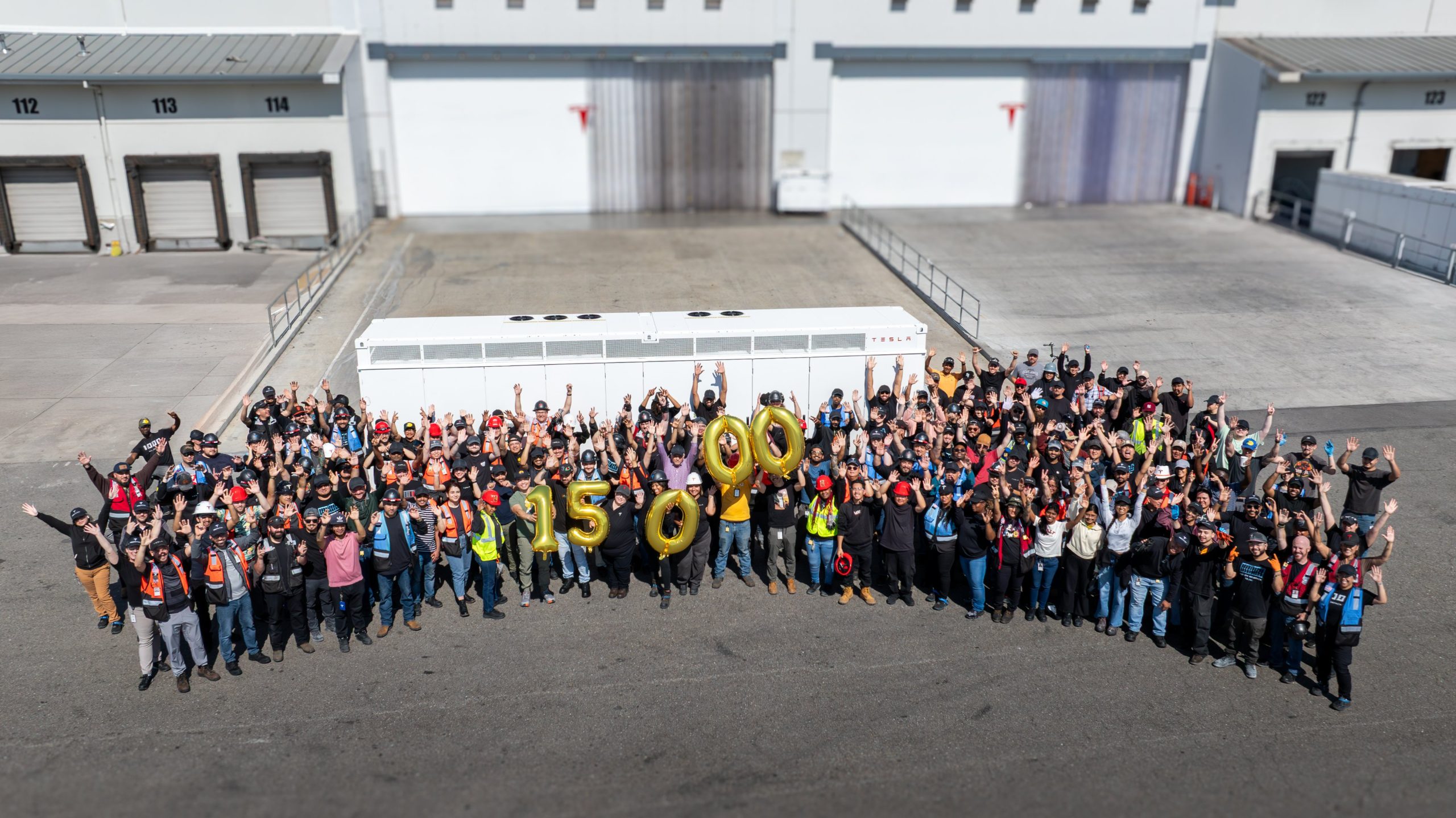
The Tesla Lathrop Megafactory recently achieved a new milestone. As per the official Tesla Megapack account on X, the Lathrop Megafactory has produced its 15,000th Megapack 2 XL battery.
15,000 Megapack Batteries
Tesla celebrated the milestone with a photo of the Lathrop Megafactory team posing with a freshly produced Megapack battery. To commemorate the event, the team held balloons that spelled out “15,000” as they posed for the photo.
The Tesla Megapack is the backbone of Tesla Energy’s battery deployments. Designed for grid-scale applications, each Megapack offers 3.9 MWh of energy and 1.9 MW of power. The battery is extremely scalable, making it perfect for massive energy storage projects.
More Megafactories
The Lathrop Megafactory is Tesla’s first dedicated facility for its flagship battery storage system. It currently stands as the largest utility-scale battery factory in North America. The facility is capable of producing 10,000 Megapack batteries every year, equal to 40 GWh of clean energy storage.
Thanks to the success of the Megapack, Tesla has expanded its energy business by building and launching the Shanghai Megafactory, which is also expected to produce 40 GWh of energy storage per year. The ramp of the Shanghai Megafactory is quite impressive, with Tesla noting in its Q1 2025 Update Letter that the Shanghai Megafactory managed to produce over 100 Megapack batteries in the first quarter alone.
Tesla Energy’s Potential
During the first quarter earnings call, CEO Elon Musk stated that the Megapack is extremely valuable to the energy industry.
“The Megapack enables utility companies to output far more total energy than would otherwise be the case… This is a massive unlock on total energy output of any given grid over the course of a year. And utility companies are beginning to realize this and are buying in our Megapacks at scale,” Musk said.
Energy
Tesla Megapacks powers the xAI Colossus supercomputer
Tesla Megapacks step in to stabilize xAI’s Colossus supercomputer, replacing natural gas turbines. Musk’s ventures keep intertwining.

Tesla Megapack batteries will power the xAI Colossus supercomputer in Memphis to ensure power stability. The collaboration between Tesla and xAI highlights the synergy among Elon Musk’s ventures.
The artificial intelligence startup has integrated Tesla Megapacks to manage outages and demand surges, bolstering the facility’s reliability. The Greater Memphis Chamber announced that Colossus, recently connected to a new 150-megawatt electric substation, is completing its first construction phase. This transition addresses criticism from environmental justice groups over the initial use of natural gas turbines.
“The temporary natural gas turbines that were being used to power the Phase I GPUs prior to grid connection are now being demobilized and will be removed from the site over the next two months.
“About half of the operating turbines will remain operating to power Phase II GPUs of xAI until a second substation (#22) already in construction is completed and connected to the electric grid, which is planned for the Fall of 2025, at which time the remaining turbines will be relegated to a backup power role,” the Chamber stated.
xAI’s rapid development of Colossus reflects its ambition to advance AI capabilities, but the project has faced scrutiny for environmental impacts. The shift to Megapacks and grid power aims to mitigate these concerns while ensuring operational continuity.
The Megapack deployment underscores the collaboration among Musk’s companies, including Tesla, SpaceX, Neuralink, and The Boring Company. Tesla appears to be the common link between all of Musk’s companies. For example, The Boring Company built a tunnel in Giga, Texas. In addition, Musk has hinted at a potential collaboration between the Tesla Optimus Bot and Neuralink. And from January 2024 to February 2025, xAI invested $230 million in Megapacks, per a Tesla filing.
Tesla Energy reported a 156% year-over-year increase in Q1 2025, deploying 10.4 GWh of storage products, including Megapacks and Powerwalls. Tesla’s plans for a new Megapack factory in Waller County, Texas, which is expected to create 1,500 jobs in the area, further signal its commitment to scaling energy solutions.
As xAI leverages Tesla’s Megapacks to power Colossus, the integration showcases Musk’s interconnected business ecosystem. The supercomputer’s enhanced stability positions xAI to drive AI innovation, while Tesla’s energy solutions gain prominence, setting the stage for broader technological and economic impacts.
Energy
Tesla Energy celebrates one decade of sustainability
Tesla Energy has gone far since its early days, and it is now becoming a progressively bigger part of the company.
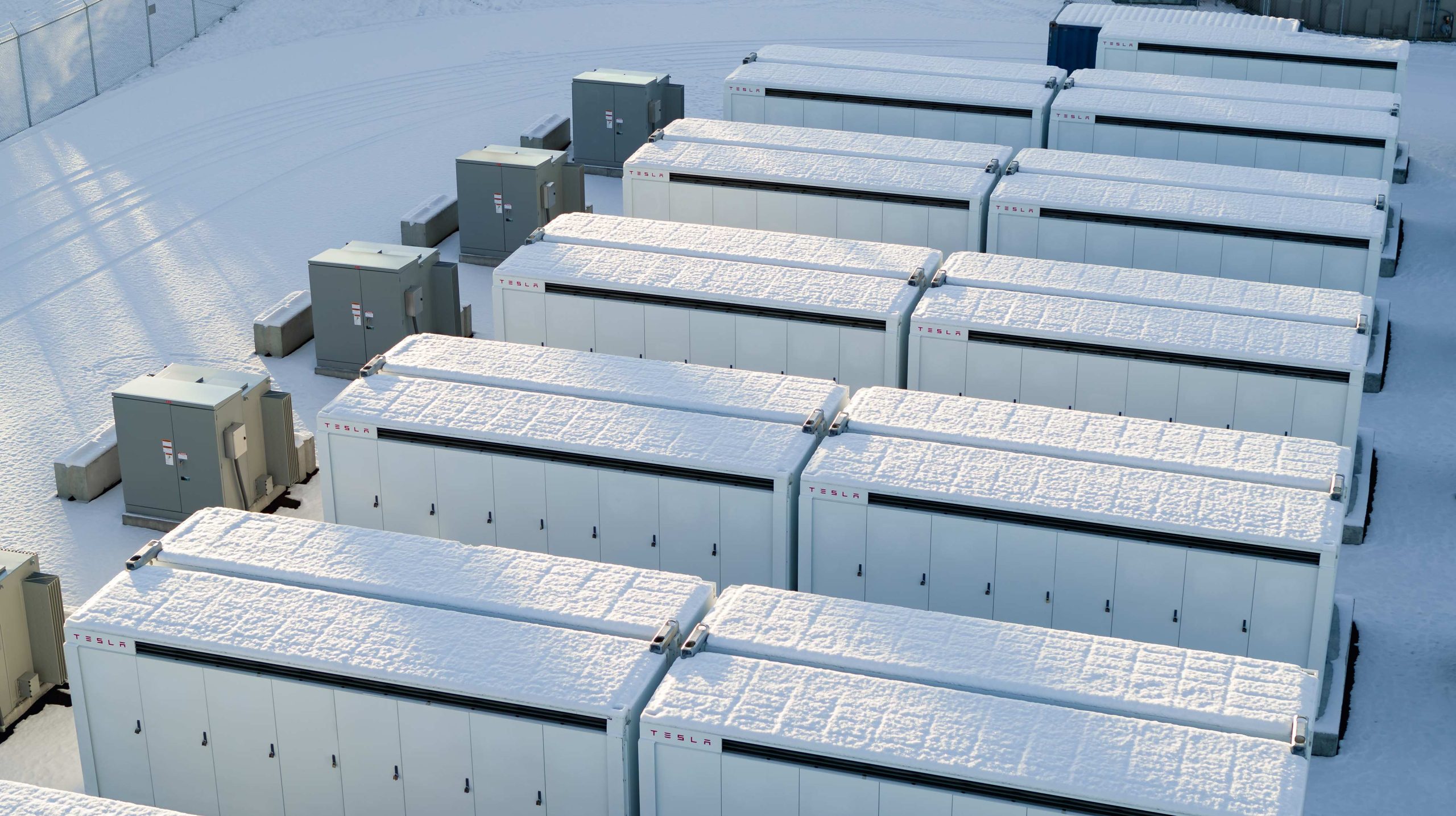
Tesla Energy recently celebrated its 10th anniversary with a dedicated video showcasing several of its milestones over the past decade.
Tesla Energy has gone far since its early days, and it is now becoming a progressively bigger part of the company.
Tesla Energy Early Days
When Elon Musk launched Tesla Energy in 2015, he noted that the business is a fundamental transformation of how the world works. To start, Tesla Energy offered the Powerwall, a 7 kWh/10 kWh home battery system, and the Powerpack, a grid-capable 100 kWh battery block that is designed for scalability. A few days after the products’ launch, Musk noted that Tesla had received 38,000 reservations for the Powerwall and 2,500 reservations for the Powerpack.
Tesla Energy’s beginnings would herald its quiet growth, with the company later announcing products like the Solar Roof tile, which is yet to be ramped, and the successor to the Powerwall, the 13.5 kWh Powerwall 2. In recent years, Tesla Energy also launched its Powerwall 3 home battery and the massive Megapack, a 3.9 MWh monster of a battery unit that has become the backbone for energy storage systems across the globe.
Key Milestones
As noted by Tesla Energy in its recent video, it has now established facilities that allow the company to manufacture 20,000 units of the Megapack every year, which should help grow the 23 GWh worth of Megapacks that have already been deployed globally.
The Powerwall remains a desirable home battery as well, with more than 850,000 units installed worldwide. These translate to 12 GWh of residential entry storage delivered to date. Just like the Megapack, Tesla is also ramping its production of the Powerwall, allowing the division to grow even more.
Tesla Energy’s Role
While Tesla Energy does not catch as much headlines as the company’s electric vehicle businesses, its contributions to the company’s bottom line have been growing. In the first quarter of 2025 alone, Tesla Energy deployed 10.4 GWh of energy storage products. Powerwall deployments also crossed 1 GWh in one quarter for the first time. As per Tesla in its Q1 2025 Update Letter, the gross margin for the Energy division has improved sequentially as well.
-

 Elon Musk2 weeks ago
Elon Musk2 weeks agoTesla investors will be shocked by Jim Cramer’s latest assessment
-

 News2 days ago
News2 days agoTesla debuts hands-free Grok AI with update 2025.26: What you need to know
-

 Elon Musk4 days ago
Elon Musk4 days agoxAI launches Grok 4 with new $300/month SuperGrok Heavy subscription
-

 Elon Musk7 days ago
Elon Musk7 days agoElon Musk confirms Grok 4 launch on July 9 with livestream event
-

 News1 week ago
News1 week agoTesla Model 3 ranks as the safest new car in Europe for 2025, per Euro NCAP tests
-

 Elon Musk2 weeks ago
Elon Musk2 weeks agoxAI’s Memphis data center receives air permit despite community criticism
-

 News4 days ago
News4 days agoTesla begins Robotaxi certification push in Arizona: report
-

 Elon Musk2 weeks ago
Elon Musk2 weeks agoTesla scrambles after Musk sidekick exit, CEO takes over sales


